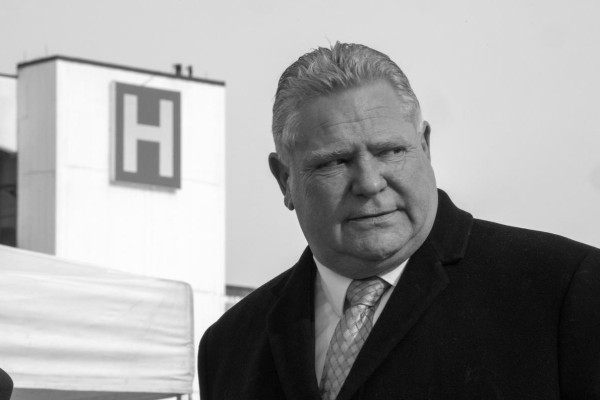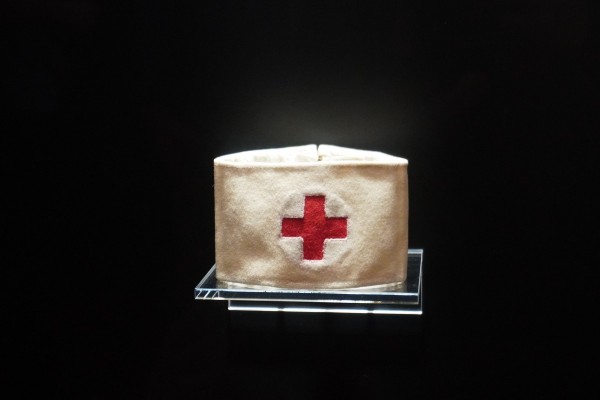The life and death struggle for public health care
Clarke: We cannot allow those in power to turn back the clock to a time when only the rich had access to decent medical care

Of the many manifestations of societal crisis we face in these harsh and uncertain times, the threat to public health care systems is among the most serious. The defence of health care against austerity and privatization is in fact a defining struggle of the present period.
As the pandemic began to play out along the fault lines of social inequality, placing the poor and marginalized at greatest risk, Anthony Dale, President and Chief Executive of the Ontario Hospital Association, told the Ottawa Citizen that “Ontario’s health care system is seeing the consequences of years of underfunding as it scrambles to prepare for an influx of COVID-19 cases.” Dale offered a grim assessment of the situation: “The state of semi-permanent austerity, 100-per-cent-plus occupancy and very intensive work environments are not conducive to the kind of quality of care that we should be striving to provide in this province.” He noted that Ontario has fewer hospital beds per capita than any other province and that many hospitals have been functioning at over 100-per-cent capacity on a regular basis in recent years.” The impact of the global health emergency drove home the compounded impact of decades of austerity and social cutbacks.
Breakdown
In recent months, even very mainstream media outlets have been bandying around the term “polycrisis” in order to describe the situation that is unfolding in country after country. With a cost of living crisis, among other factors eroding working class living standards, the increasing inadequacy of medical services and the prospect of their privatization are crucial threats to people’s wellbeing.
We hear so much about the intense pressure on medical providers in hospital settings that we can see the risk of breakdown on the horizon. Case after case is now being reported of the kind of horrible situation that claimed the life of a 37-year-old woman in Nova Scotia who suffered in terrible pain at a crowded makeshift emergency room. Her husband Gunter Holthoff went to the desk five times to no avail to try and get assistance for her as her condition worsened. By the time medical intervention took place, he told CTV News, “she had already undergone significant blood loss to vital organs, including her brain” and it was impossible to save her.
There are calls for an inquiry into this tragedy, but it is abundantly clear that the impossibly crowded and busy conditions at the emergency facility at the time were a prime factor in the failure to provide treatment. As health care provision moves closer to collapse, the most destructive course of action is to offer privatized medical care to those with the means to pay for it, while forcing the rest of us to line up for the sub-standard remnants of the public system. Given the prevailing political agenda, it is hardly surprising that this threat is looming over us. As Natalie Mehra, Executive Director of the Ontario Health Coalition (OHC) put it “Canada’s public hospitals are overwhelmed beyond comprehension yet we are hearing our prime minister talk positively about more cuts to—and privatization of—public hospitals.” She added that “the unrelenting cuts to and privatization of public hospitals are a big part of the status quo that has plummeted us into crisis.”
The OHC makes clear that Canada has very nearly the worst record of OECD member countries when it comes to the number of available hospital beds for every 1,000 people. Ontario is in the worst situation of any of Canada’s provinces in this regard. Based on this, Mehra concludes that “Canada cannot any longer undermine its public hospital system and privatizing it is the destruction of our health care, not an innovation.”
If the state of Ontario’s hospital system is deeply concerning, the fact that this state of affairs is being overseen by a right-wing Conservative government that is headed up by Doug Ford is outright terrifying. For someone like Ford, the opportunity to use the crisis to advance privatization is enticing in the extreme, so his response is entirely predictable.
The Ontario government announced a plan to outsource up to half of Ontario’s surgeries to private, for-profit facilities. As journalist Mitchell Thompson observes, the clear intention is to further entrench “a two-tiered system of health care in Ontario, as many private facilities generate revenues by charging user fees for premium services—something that would give wealthier patients better quality health care than those who can’t afford to pay.” Thompson reports that at a recent press conference, the hapless Ontario Health Minister, Sylvia Jones, was asked whether she supports the upselling of services at private facilities” to which she responded, “I wouldn’t call it upselling, I would call it patient options.” Of course, the so-called options the minister was referring to are available to those in her income bracket and not to the majority of working class people. As she well knows, once the wealthy have been transitioned to a private system, the pace at which public health care is degraded will pick up quickly.
Deepening attack
The recent response of the federal government to the crisis in the provincial health care systems is to provide $46.2 billion in new funding over the next decade. It has been greeted by the most diplomatic and conciliatory commentators as a very modest stop-gap initiative that leaves the fundamental problems unresolved. This speaks to the role of the Trudeau Liberals in implementing a regressive agenda on health care, in spite of the care Prime Minister Trudeau takes to avoid the crude antics of someone like Ford.
Former Liberal Health Minister Jane Philpott also suggested that the “public-private conversation is a bit of a distraction.” Far from being a distraction, however, the threat of privatization goes to the very heart of the matter. Opening up possibilities to opt out of the system in order to obtain higher calibre private medical services is the weapon of choice for those who wish to demolish public health care.
The long accumulating effects of austerity have reached a critical point at a terrible time. The assault on health care is only one aspect of the attack we face in our workplaces and in our communities, but it is one of the most basic and deadly. In the present moment, defending health care systems is a defining struggle. We simply cannot allow those in power to turn back the clock to a time when only the rich had unfettered access to decent medical care.
While we need to take up particular struggles on the health care front, they must be a prominent part of a broader working class fightback. The conditions of crisis and the political forces that are driving forward the attack on health care are creating a mood of resistance that is playing out powerfully in several countries. A strike wave has been building in the UK and social resistance is rising to historic proportions in France. The intransigence with which governments are greeting these upsurges poses major questions about effective forms of struggle in this particular period.
What must be clear to all of us is that the assault by capital on something as vital as public health care must not be taken lying down. The system has already been significantly undermined, as lengthening wait times for surgery and overwhelmed emergency departments starkly reveal. In our unions and communities, an iron clad resolve to beat back this attack must be forged. If we can’t unleash the working class power needed to prevent the destruction of public health care, what can we hope to defend?
John Clarke is a writer and retired organizer for the Ontario Coalition Against Poverty (OCAP). Follow his tweets at @JohnOCAP and blog at johnclarkeblog.com.










